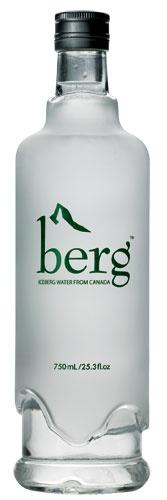
Berg Water Analysis:
| Balance | Still |
| Virginality | Superior |
| Minerality | Super Low |
| Orientation | Hint of Sweet |
| Hardness | Soft |
| Vintage | 15,000 Years |
| Carbonation | |
| TDS | 10 mg/l |
| ph factor | 7.8 |
| Hardness | 2 mg/l |
| Nitrate | 1 mg/l |
| Calcium | 0.2 mg/l |
| Magnesium | 0.3 mg/l |
| Sodium | 1 mg/l |
| Potassium | |
| Silica | |
| Bicarbonate | |
| Sulfate | |
| Chloride |
| Source: | Iceberg |
| Location: | |
| Country of Origin: | Canada |
| Region: | Newfoundland |
| Place: | North Atlantic |
| Established: | 2005 |
| Company: | |
| Status: | Non-Member of the Fine Water Society |
| Web Site: | |
| phone: | |
| email: | |
| Social Media: |
Iceberg water is a unique soft water with a super low mineral content. This water's journey started over 15,000 years ago in the ancient glaciers of western Greenland.
Isolation has made its source totally inaccessible to man. It is not until massive pieces of ice break off into the ocean in the form of icebergs that they can be harvested.
Icebergs are melted and bottled under strict quality conditions in order to preserve the water's natural qualities.
Production can be limited due to extended winters and the harsh conditions of the North Atlantic. Harvesting icebergs is a dangerous task. They are very unstable, shift frequently and can roll over in seconds, which make the possibility of drinking iceberg water an accomplishment by itself.
The bottle has been designed to look like glass but with all the conveniences of PET. It represents the ice cap, and the green tint reflects the ice cold green shade often observed in icebergs.
